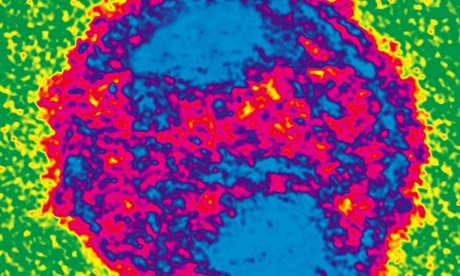Failure to detect infections in about 30% of sufferers means early-testing initiatives are not working, health experts say

About 30% of patients with HIV are diagnosed well after they should have begun treatment, according to the latest Australian data, suggesting early-testing initiatives have not worked.
Despite 88% of the country’s new infections occurring in gay men, unprotected sex in that group continues to be a key driver of infections, making falling HIV testing rates among young gay men a concern.
There were 1,235 new cases of HIV diagnosed in Australia last year – an increase of 70% since 1999 when diagnoses were at their lowest, figures from the annual HIV surveillance report by the University of NSW Kirby Institute show.
Many of those were not being diagnosed early enough, allowing their immune system to fail and potentially posing a risk to others, the report found.
The best indicator of how long a person has had HIV for is their CD4+ cell count per microlitre, which declines on average by 50%–60% per year in people with HIV. The proportion of late diagnosis cases, defined by a CD4+ cell count of less than 350 cells per microlitre at diagnosis, had not improved in the three years to 2013, the report found. In people without HIV, the count is above 500.
“These data are suggestive of no substantial shift in the disease stage at which people are diagnosed despite recent initiatives to increase HIV testing,” the report said.
Along with condom use, early treatment of infections is considered essential to preventing HIV’s spread. Most of those taking antiretroviral treatments reduce their chance of transmitting the virus to others during unprotected sex by up to 96%.
But in some cases, people were living for several years with HIV without knowing, said Associate Professor David Wilson, head of Kirby’s surveillance and evaluation program for public health.
“It is important to point out that rates of treatment once people are diagnosed is better here than in most other countries in the world, with 60% of people diagnosed with HIV on treatment that restores their immune system,” Wilson said.
“But we don’t want to begin treating people when their immune system has already crumbled.”
People who delayed their treatment too long also often took longer to recover. Wilson said it meant attempts by health departments to get people to test, for example through rapid-testing by GPs and at sexual health clinics, were not leading to earlier diagnosis. But Wilson added he was hopeful the approval of HIV home-testing would lead to people becoming diagnosed sooner.
No Australian state or territory has a long-term decreasing trend in HIV. Victoria recorded the largest increase in HIV cases in 2013, with 365 new diagnoses.
Condoms were still the most effective way to prevent HIV’s spread, Wilson said, and was particularly important for gay men.
Up to 12% of that group is estimated to be infected with HIV. The prevalence among sex workers, by comparison, is less than 0.1%.
Yet the annual trends in behaviour report by UNSW’s Centre for Social Research in Health – also released Thursday – found the rate of unprotected anal sex among gay men with casual partners has increased in the past decade.
More than 35% of men with casual partners in the six months before the survey reported having unsafe anal sex.
A Melbourne HIV specialist doctor from Monash University, Nick Medland, says HIV rates were high among gay men not just because of that, but also because the HIV epidemic hit the gay male community first.
“Australia has been very successful following the discovery of HIV in preventing it from getting to other communities like drug users and sex workers,” he said.
People generally, including heterosexual Australians, had become more complacent towards catching HIV, Wilson said.
“A lot of things have happened since HIV first came to light, for example HIV is no longer fatal in most cases,” he said. “I guess that has caused people to become lax about acquiring it, people aren’t as terrified as they were in 1990s.
“It’s a good thing that they’re not terrified and that stigma is being reduced, but it does also mean some people are a lot less careful. I’m not saying they don’t care if they are infected, but 20 years ago people fell apart during the testing process.”
The annual HIV testing rate among gay men who are not HIV positive is around 60%, according to the report, with the rate falling particularly among those who were under 25 years of age.
This was partly because public awareness campaigns around HIV were not as strong now, Medland said. And HIV testing was important for the general community – not just gay men.
“It’s about 30 years on from the peak of HIV awareness campaigns, and it’s a bit difficult for the community to sustain that level of awareness,” Medland said. “People have moved on to worry about other things.”
